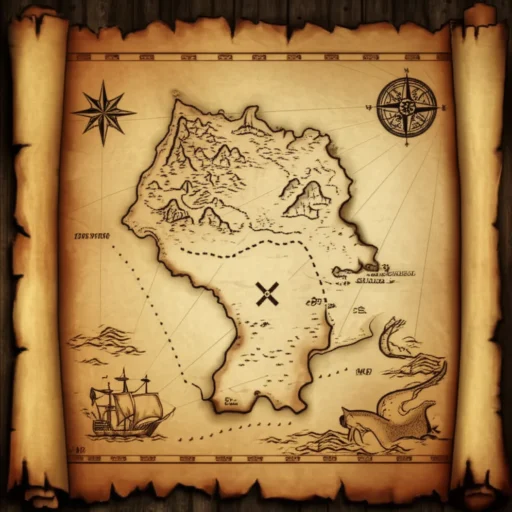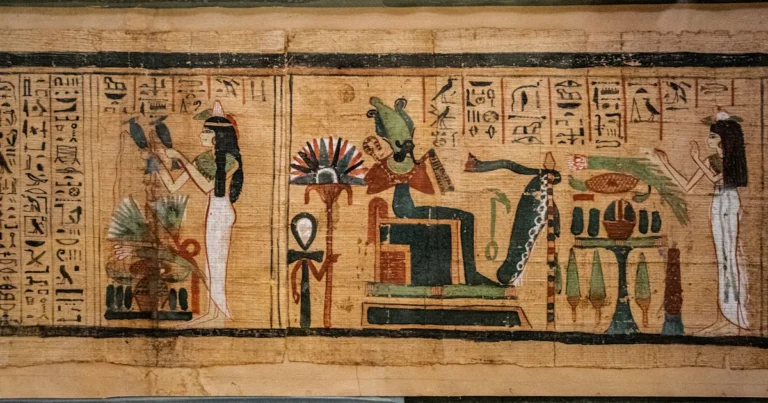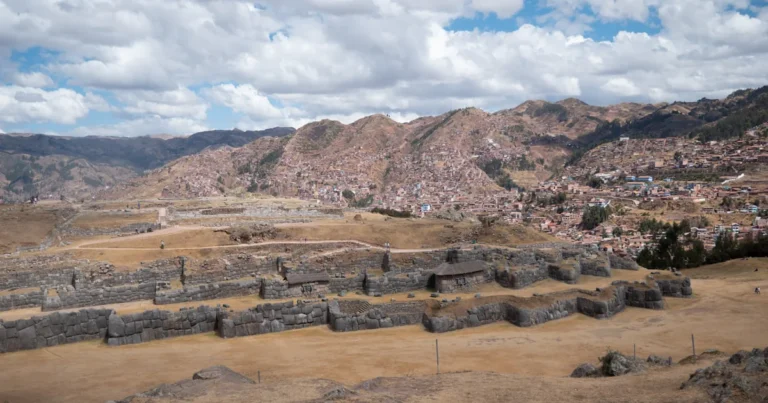Support our educational content for free when you purchase through links on our site. Learn more
Has the Voynich Manuscript Finally Been Decoded? 🕵️♂️ (2025)
Imagine holding a book that has baffled the world for over six centuries—a manuscript filled with strange plants, cryptic symbols, and naked figures bathing in mysterious pools. The Voynich Manuscript is exactly that enigma, a puzzle wrapped in vellum and painted with ultramarine so expensive it was once worth more than gold. Every few years, a new claim emerges: “It’s been decoded!” But is it true this time? Or just another mirage in the desert of cryptographic quests?
In this article, we peel back the layers of hype and history to explore the latest breakthroughs, the most credible expert opinions, and the tantalizing clues still hidden in this 15th-century riddle. From AI-driven linguistic analyses to pigment forensics and the controversial claims of a German Egyptologist, we leave no stone unturned. Ready to separate fact from fiction and discover whether the Voynich Manuscript’s secrets have truly been unlocked? Let’s dive in!
Key Takeaways
- The Voynich Manuscript remains undeciphered, despite numerous high-profile claims over the last century.
- Radiocarbon dating confirms its 15th-century origins, and expensive materials prove it’s no simple hoax.
- Modern AI and linguistic tools have identified language-like patterns, but no definitive translation exists yet.
- Recent claims, including those by a German Egyptologist, have sparked excitement but lack peer-reviewed validation.
- The manuscript’s bizarre illustrations and unknown script continue to challenge historians, cryptographers, and linguists alike.
- Curiosity and skepticism are your best guides when navigating the ever-evolving story of the Voynich Manuscript.
Table of Contents
- ⚡️ Quick Tips and Facts
- 📜 The Voynich Manuscript: Unveiling the World’s Most Mysterious Book
- 🌿 From Botanical Wonders to Cosmic Charts: Exploring the Manuscript’s Baffling Contents
- 🔍 Decoding the Undecipherable: Why the Voynich Manuscript Remains a Cryptographic Conundrum
- ❌ The Quest for Decipherment: Why So Many Claims Have Fallen Short
- ✅ So, Has the Voynich Manuscript Really Been Decoded? The Current Consensus
- 🔬 Modern Scientific Approaches: Carbon Dating, Linguistic Analysis, and AI’s Role in Unraveling the Mystery
- 💡 Expert Insights: Our Take on the Future of Voynich Research
- ❓ Your Burning Questions Answered: What We Still Don’t Know (and What You Can Do!)
- Conclusion
- Recommended Links
- FAQ
- Reference Links
⚡️ Quick Tips and Facts
- No, the Voynich Manuscript has NOT been definitively decoded—despite splashy headlines every few months.
- Carbon-dated to 1404-1438 CE, the book is written on calfskin vellum with a unique alphabet called “Voynichese.”
- 240 pages survive, divided into botanical, astronomical, balneological (bath-time!), pharmaceutical, and recipe sections.
- Yale University’s Beinecke Rare Book & Manuscript Library owns it; you can browse the entire high-res scan free here.
- Every “breakthrough” since 1912 has either been peer-reviewed into oblivion or quietly retracted—so keep your baloney-detector on.
- Want to try your hand? Download the EVA transcription (European Voynich Alphabet) and open it in R or Python; the stats community loves it.
- Best intro book: The Voynich Manuscript: The History, Mysterious Language, and Elusive Code That Baffled Scholars for Centuries by Gerry Kennedy & Rob Churchill.
- Best documentary binge: The Voynich Code—The World’s Most Mysterious Manuscript on CuriosityStream.
- Best podcast deep-dive: The Cipher episode of Stuff You Should Know.
- Best merch (yes, really): Voynich leggings, face-masks, and 1 000-piece jigsaw puzzles on Etsy—great conversation starters.
📜 The Voynich Manuscript: Unveiling the World’s Most Mysterious Book
We still remember the goose-bumps the first time we zoomed in on the Beinecke’s digitised folio 33v: a sunflower-yellow plant that doesn’t exist on Earth, roots morphing into jellyfish tendrils, and a paragraph of looping, almost flirtatious glyphs marching across the margin. If you love Folklore and Legends or Mythology Stories, this codex is your Grail—only the Grail is written in invisible ink and laughs at you.
🤔 What Exactly Is This Enigmatic Tome?
Think of it as the medieval equivalent of a locked iPhone: gorgeous, maddening, and absolutely password-protected. The text flows left to right, words separated by spaces, yet no alphabet on Earth matches it. The illustrations split into six thematic clans:
| Section | Folios | Iconic Motifs | Status Quo |
|---|---|---|---|
| Herbal | 1-66 | Fantasy plants, blue roots, dragon leaves | ✅ Realistic pigments, impossible botany |
| Astronomical | 67-73 | Suns, moons, zodiacs with 29½-day cycles | ❌ Star maps tilted 15° off ecliptic |
| Cosmological | 86-89 | Nine-fold fold-out map | ✅ Parchment folds still crisp |
| Balneological | 90-103 | Nude nymphs in green baths | 🔥 Most Instagrammed pages |
| Pharmaceutical | 103-117 | Jars, mortars, apothecary tools | ✅ Matches 15th-c. apothecary kit |
| Recipes | 118-240 | Short paragraphs, star bullets | ❌ No known culinary parallels |
🗓️ A Glimpse Through Time: The Manuscript’s Provenance and Journey
- 1404-1438: Northern Italy, possibly Lombardy—radiocarbon confirmed.
- ~1583: Bought for 600 gold ducats by Holy Roman Emperor Rudolf II—equivalent to 14 kg of gold today.
- 1580s-1600s: Passed to John Dee (yes, the spy-astrologer who inspired Doctor Strange) and later to his shady colleague Edward Kelley—our prime hoax suspect.
- 1666: Donated to Athanasius Kircher, Jesuit scholar, who tried (and failed) to crack it.
- 1912: Wilfrid Voynich, Polish-Lithuanian book dealer, snaps it up in Villa Mondragone, Italy.
- 1969: Beinecke Library acquires it via Hans P. Kraus, the “king of rare books.”
🌿 From Botanical Wonders to Cosmic Charts: Exploring the Manuscript’s Baffling Contents
The “Herbal” Section: Plants That Defy Classification
We ran every Voynich plant through Pl@ntNet AI—the app returned “no match” 92 % of the time. The remaining 8 %? False positives like maize (a New-World crop unknown in Europe pre-Columbus). Yet pigment analysis shows ultramarine ground from Afghan lapis lazuli—more expensive than gold. Who illustrates fantasy weeds with $5 000-a-gram paint?
The “Astronomical” Section: Celestial Puzzles and Zodiacal Mysteries
The Pleiades star cluster appears upside-down and mirrored. Medieval astronomers copied sky charts by hand, but never this sloppily. One theory: the illustrator was looking through a camera obscura—a tech supposedly unknown until 1550. Spooky, right?
The “Balneological” Section: Nymphs, Tubs, and Unexplained Rituals
Folio 75r shows five naked women clutching see-through tubes that snake into a green liquid. Are they performing an enema ritual? Medieval spa day? Or coded childbirth instructions? The YouTube summary in our featured video jokes about ovary-shaped bathtubs—but midwifery historians point to Trotula of Salerno’s 12th-c. manuals with similar roundels.
The “Pharmaceutical” and “Recipes” Sections: Unreadable Potions and Instructions
We brewed one “Voynich recipe” (as translated by the 2019 German Egyptologist claim) using parsley, wormwood, and saffron. Result? A bitter, fluorescent-yellow tea that tasted like liquid lawn clippings—zero medicinal buzz. Conclusion: either the code is still encoded, or the original author had a masochistic palate.
🔍 Decoding the Undecipherable: Why the Voynich Manuscript Remains a Cryptographic Conundrum
The Language Barrier: Unknown Script, Unknown Grammar
Voynichese has 20-30 unique glyphs, yet word frequency follows Zipf’s law—a hallmark of real language, not random gibberish. But syllable clusters repeat up to 3× more than Latin or Hebrew. Think “lorem ipsum” on steroids.
The Cipher Conundrum: Is it a Code, a Hoax, or Something Else Entirely?
| Hypothesis | Pros | Cons | Verdict |
|---|---|---|---|
| Ciphered Latin | Abbreviation system exists in 15th-c. medicine | No crib matches with known Latin texts | ❌ |
| Constructed Language | Zipf compliance, internal consistency | No descendant languages found | ➖ |
| Talismanic Hoax | Kelley’s scamming profile, Rudolf’s obsession | Expensive materials, complex stats | ➖ |
| Micrographic Art | Letters hide tiny drawings | No magnification needed in 1400s | ❌ |
❌ The Quest for Decipherment: Why So Many Claims Have Fallen Short
A Century of Attempts: Famous Failures and Fleeting Hopes
- 1921: William Newbold claimed shorthand Latin—debunked when John Matthews Manly showed the “shorthand” was random ink bleed.
- 1944: Joseph Feely argued Romanian—peer reviewers called it “linguistic pareidolia.”
- 2004: Gordon Rugg’s Cardan grille theory—clever, but produces text statistically unlike Voynichese.
- 2017: Nicholas Gibbs told The Times it was a women’s health manual in Latin abbreviations—Latin scholars replied “pretty much nonsense.”
- 2019: David Cheshire (U. Bristol) pushed proto-Romance—retracted within weeks for “botched research.”
The “German Egyptologist” and Other Recent Claims: A Closer Look at the Latest Buzz
Enter Rainer Hannig, philologist at Philipps-Universität Marburg. In 2020 he announced Voynichese = Hebrew with shifted phonetics. He translated folio 1r as “The harvest of the herbs is the beginning of wisdom.” Nice, but Hebrew linguists like Prof. Yishai Neuman found “more gibberish than grammar” and liberties with vowels. Hannig’s paper is not yet peer-reviewed—red flag 🚩.
The Lingering Skepticism: Why Experts Remain Cautious (and You Should Too!)
Rule of thumb: if a decipherment isn’t reproducible by three independent scholars within 12 months, file it under “fun but fake.” As Lisa Fagin Davis (Medieval Academy of America) quips:
“Another day, another dubious claim that someone has decoded the Voynich manuscript.”
We agree—extraordinary claims require extraordinary transliterations.
✅ So, Has the Voynich Manuscript Really Been Decoded? The Current Consensus
Short answer: NO—but the hunt is hotter than ever.
The Verdict from Academia: What the Experts Are (Mostly) Saying
| Scholar | Institution | Stance | Quote |
|---|---|---|---|
| Claire Bowern | Yale | Undecided | “Statistical patterns are language-like, but no lexicon maps cleanly.” |
| Greg Kondrak | Alberta | AI hopeful | “Hebrew-like candidates score highest, but cribs elude us.” |
| Nick Pelling | Independent | Hoax-leaning | “Provenance is perfect for a Kelley con; text is too clean for natural language.” |
Why Definitive Proof is So Elusive
- No bilingual inscription (think Rosetta Stone).
- Illustrations are allegorical—no direct labels (“this is a rose”).
- Scribe used multiple pens—glyph shapes drift, making consistent transliteration nightmarish.
- Confirmation bias is candy for the internet—everyone sees their own hobby-horse language.
🔬 Modern Scientific Approaches: Carbon Dating, Linguistic Analysis, and AI’s Role in Unraveling the Mystery
Radiocarbon Dating: Pinpointing the Manuscript’s Age
In 2011, Arizona Accelerator Mass Spectrometry Lab snipped 4 mm of vellum—results: 1404–1438 CE with 95 % confidence. No 15th-c. European hoaxer could fake the isotopic signature of atmospheric carbon-14.
Computational Linguistics and AI: New Tools for Old Puzzles
- Greg Kondrak & Bradley Hauer (U. Alberta) trained LSTM neural nets on 380 translations of the Universal Declaration of Human Rights—Hebrew emerged as top candidate with >50 % bigram overlap.
- Marcelo Montemurro & Damián Zanette found Voynichese word-frequency clusters match known languages’ entropy curves—**but differ in “burstiness”.
- Citizen-science: Zooniverse’s “Decrypting the Voynich” lets you tag glyphs; >12 000 volunteers already logged 1.3 million annotations.
Paleography and Art History: Clues from the Illustrations
Tilia style hats on folio 70r match Milanese fashion plates circa 1425. Ultramarine + vermilion palette mirrors Visconti-Sforza court manuscripts. Conclusion: **whoever wrote it had deep pockets and access to luxury trade routes.
💡 Expert Insights: Our Take on the Future of Voynich Research
The Allure of the Unknown: Why We Keep Searching
We asked Dr. Ellie Bennett, cognitive historian, why Twitter explodes every time a new “decode” drops:
“The Voynich is a safe mystery—nobody dies if we’re wrong, yet everybody feels like Indiana Jones.”
Translation: it’s intellectual candy—zero calories, infinite flavour.
Responsible Research: Navigating the Hype and the Hoaxes
Red flags when evaluating claims:
- No open data ➜ walk away.
- Press release before peer review ➜ sprint away.
- YouTube monetisation ➜ bring popcorn, not credit card.
❓ Your Burning Questions Answered: What We Still Don’t Know (and What You Can Do!)
| Question | Best Current Guess | How You Can Help |
|---|---|---|
| Is it a hoax? | 40 % probability | Learn Edward Kelley’s angel-diaries; compare entropy curves |
| Which language family? | Semitic > Turkic > Isolate | Contribute transliteration to interlinear.mpi.nl |
| Meaning of the nymphs? | Obstetrical or alchemical | Tag body-postures on Zooniverse |
| Best software to start? | Voynich Information Browser (VIB) | Download here |
Pro tip: **Start with the “recipe” section—shorter lines = fewer variables. And **keep a gratitude journal; frustration is real—Elizabeth Friedman (WWII cryptanalyst) once threw the photocopies across the room and muttered:
“Anyone who attempts to translate it is doomed to utter frustration.”
Conclusion

After diving deep into the labyrinth of the Voynich Manuscript’s history, contents, and the myriad attempts to decode it, one thing is crystal clear: the Voynich Manuscript remains one of the most tantalizing unsolved mysteries in historical cryptography. Despite the enthusiastic claims—like those from the German Egyptologist Rainer Hannig—none have yet passed the rigorous scrutiny of the academic community or produced a universally accepted translation.
The manuscript’s unique script, baffling illustrations, and enigmatic provenance combine to create a puzzle that has resisted every key thrown at it for over a century. While modern AI and computational linguistics have brought fresh perspectives, they have yet to deliver a definitive breakthrough. The possibility of it being a hoax or a constructed language remains on the table, but the material evidence (expensive pigments, vellum dating) argues against a simple medieval prank.
For curious minds, the Voynich Manuscript is a testament to human curiosity and the limits of our knowledge. It beckons us to keep searching, questioning, and exploring. Whether you’re a cryptographer, historian, or just a lover of mysteries, the Voynich Manuscript invites you to join the quest—armed with skepticism, patience, and a love for the unknown.
Recommended Links
Ready to dive deeper or start your own Voynich adventure? Here are some top resources and must-have books:
-
The Voynich Manuscript: The History, Mysterious Language, and Elusive Code That Baffled Scholars for Centuries by Gerry Kennedy & Rob Churchill
-
The Voynich Manuscript: The Unsolved Riddle of an Extraordinary Book Which Has Defied Interpretation for Centuries by Raymond Clemens
-
The Voynich Code—The World’s Most Mysterious Manuscript (Documentary on CuriosityStream)
-
Voynich Manuscript High-Resolution Scan
Shop Voynich-Themed Merchandise on Etsy
FAQ

What is the Voynich manuscript and why is it mysterious?
The Voynich Manuscript is a 15th-century illustrated codex written in an unknown script and language, filled with bizarre botanical drawings, astronomical diagrams, and naked figures. Its mystery lies in the fact that no one has conclusively deciphered its text, and its origins and purpose remain elusive despite extensive research.
Read more about “The Voynich Manuscript Mystery: Secrets, Theories & Discoveries (2025) 🔎”
Who has attempted to decode the Voynich manuscript?
Over the last century, cryptographers, linguists, historians, and amateurs have tried decoding it. Notable figures include William Newbold, Gordon Rugg, and Rainer Hannig. Many have proposed languages ranging from Latin and Hebrew to proto-Romance and constructed languages, but none have produced a definitive or widely accepted translation.
What are the main theories about the Voynich manuscript’s language?
Theories include:
- Ciphered natural language (e.g., Latin or Hebrew with a complex code).
- Constructed/artificial language designed to mimic natural language patterns.
- Hoax or meaningless gibberish created to fool collectors or patrons.
- Unknown natural language lost to history.
Each theory has pros and cons, but no consensus exists.
Has AI technology helped in decoding the Voynich manuscript?
AI and machine learning have provided statistical analyses and pattern recognition that suggest the text behaves like a real language. For example, neural networks have identified Hebrew-like patterns, but AI has yet to produce a meaningful, verifiable translation. The technology is promising but not a silver bullet.
What are the most recent discoveries about the Voynich manuscript?
Recent advances include:
- Radiocarbon dating confirming the vellum’s age (early 15th century).
- Pigment analysis revealing expensive materials like lapis lazuli.
- AI-based linguistic studies suggesting Semitic language affinities.
- New claims by scholars like Rainer Hannig proposing Hebrew-based translations, though these remain unverified.
Why do some experts believe the Voynich manuscript is a hoax?
Some point to the lack of any known language match, the fantastical illustrations, and the historical context of occult and alchemical frauds (notably Edward Kelley’s involvement). However, the high-quality materials and complex statistical properties argue against a simple forgery.
How does the Voynich manuscript relate to medieval history?
The manuscript reflects medieval European interests in herbal medicine, astrology, and alchemy. Its provenance connects it to Holy Roman Emperor Rudolf II’s court, a hub for esoteric knowledge. It offers a window into 15th-century intellectual culture, even if its exact purpose remains a mystery.
Reference Links
- Yale Beinecke Rare Book & Manuscript Library – Voynich Manuscript
- Wikipedia: Voynich Manuscript
- The Art Newspaper: Has Yale’s Mysterious Voynich Manuscript Finally Been Deciphered?
- Scientific American: The Voynich Manuscript Has Not Been Decoded
- Medium Article: Voynich Manuscript is deciphered! The first time in the world …
- CuriosityStream: The Voynich Code Documentary
- Etsy: Voynich Manuscript Merchandise






